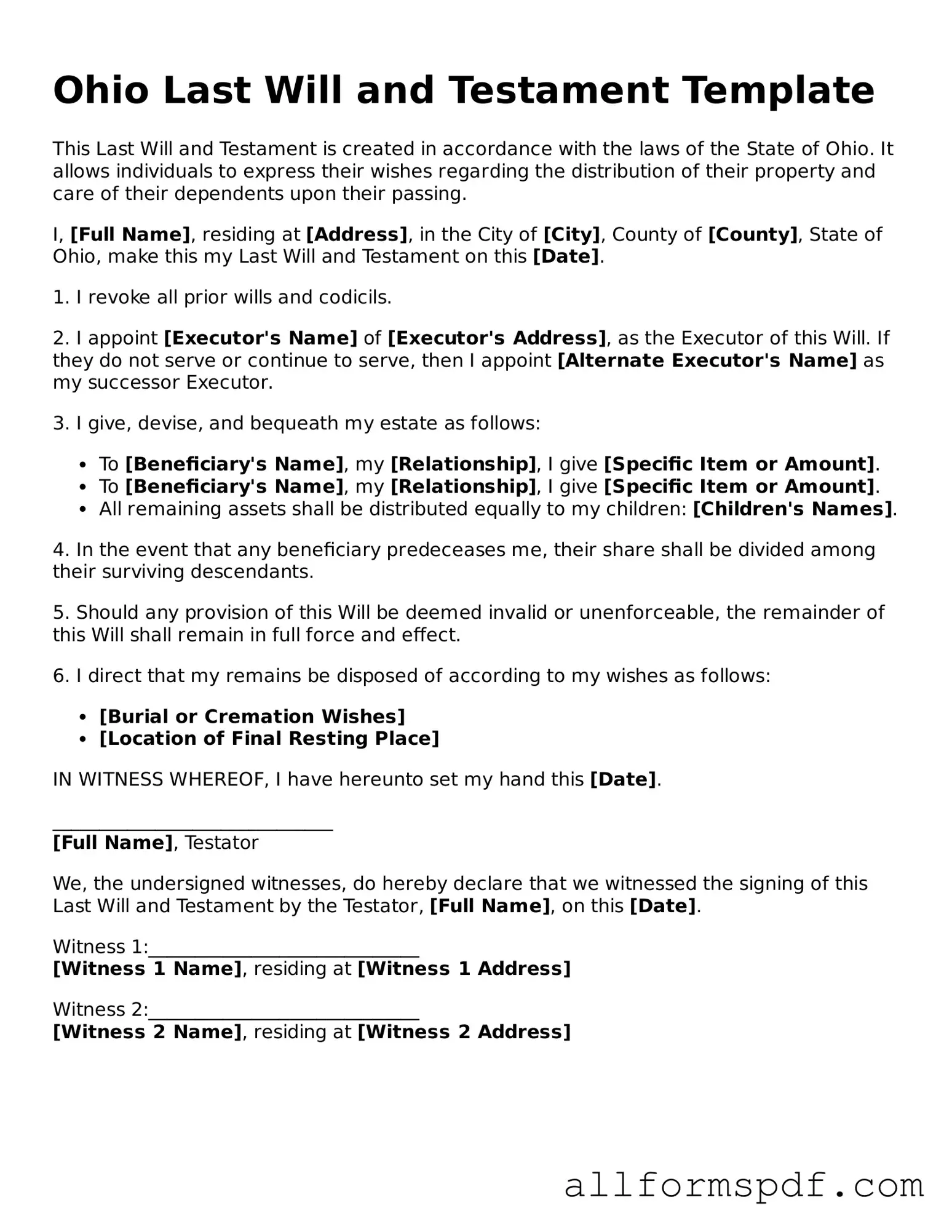Creating a Last Will and Testament is an important step in ensuring your wishes are honored after your passing. However, many people make mistakes while filling out the Ohio form, which can lead to complications down the line. Here are ten common errors to avoid.
One significant mistake is failing to date the will. Without a date, it can be challenging to determine which version of the will is the most current. This oversight can lead to disputes among heirs, as they may not know if an older will or the new one should be followed.
Another frequent error is neglecting to sign the will in front of witnesses. In Ohio, the law requires that you have at least two witnesses present when you sign your will. If this step is skipped, the will may not be considered valid.
People often forget to include a residuary clause. This clause outlines what happens to any assets not specifically mentioned in the will. Without it, those assets may be distributed according to state law, which may not align with your wishes.
Some individuals make the mistake of not being specific about their beneficiaries. Vague language can lead to confusion. For example, stating “my children” without naming them can create disputes if there are stepchildren or adopted children involved.
Another common issue is failing to update the will after major life events. Changes such as marriage, divorce, or the birth of a child should prompt a review and possible revision of your will. Neglecting to do so may result in unintended consequences.
People sometimes overlook the importance of naming an executor. This person will be responsible for carrying out your wishes, so it’s crucial to choose someone trustworthy and capable. Failing to name an executor can lead to delays and confusion in the probate process.
Using outdated forms is another mistake. Laws change, and so do the requirements for a valid will. Always ensure you are using the most current version of the Ohio Last Will and Testament form to avoid legal issues.
Some individuals mistakenly believe they can create a will without legal guidance. While it is possible to fill out the form on your own, consulting with a legal professional can help ensure that your will meets all legal requirements and accurately reflects your wishes.
Another error is not considering tax implications. Some assets may be subject to estate taxes, and failing to plan for this can reduce the inheritance your beneficiaries receive. Understanding these implications can help you make informed decisions.
Finally, neglecting to store the will in a safe place is a common mistake. If the will is lost or destroyed, it may be difficult or impossible to enforce your wishes. Consider a safe deposit box or a secure location at home to keep your will accessible yet protected.
